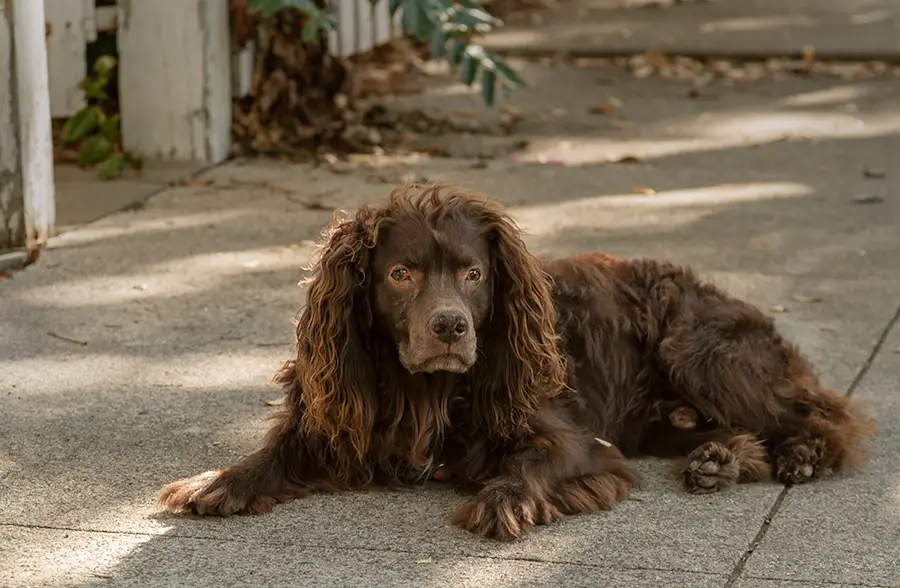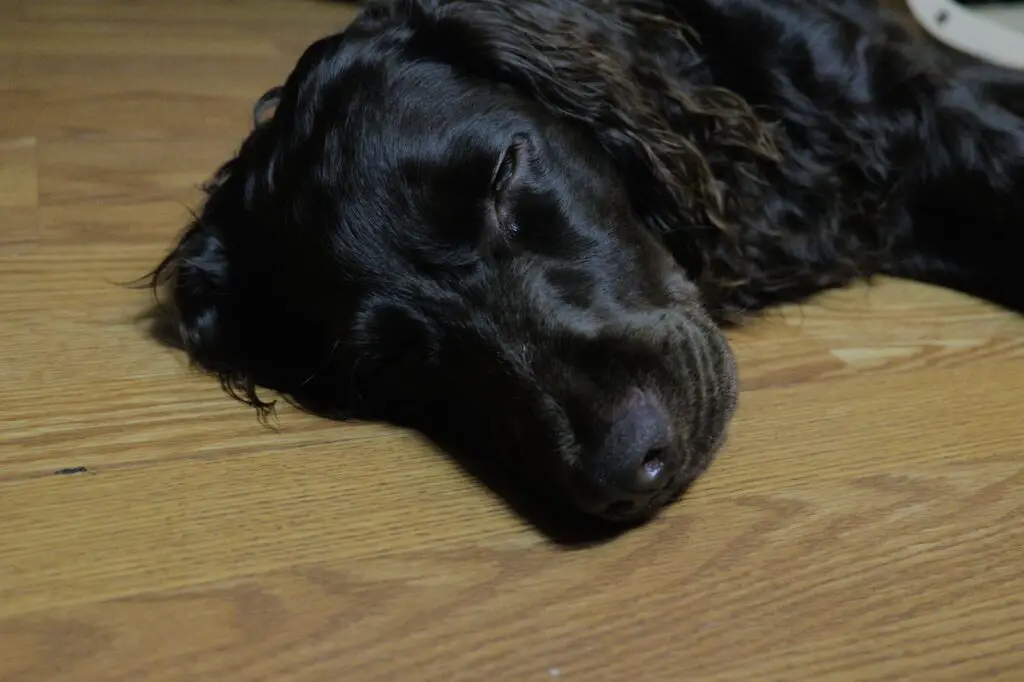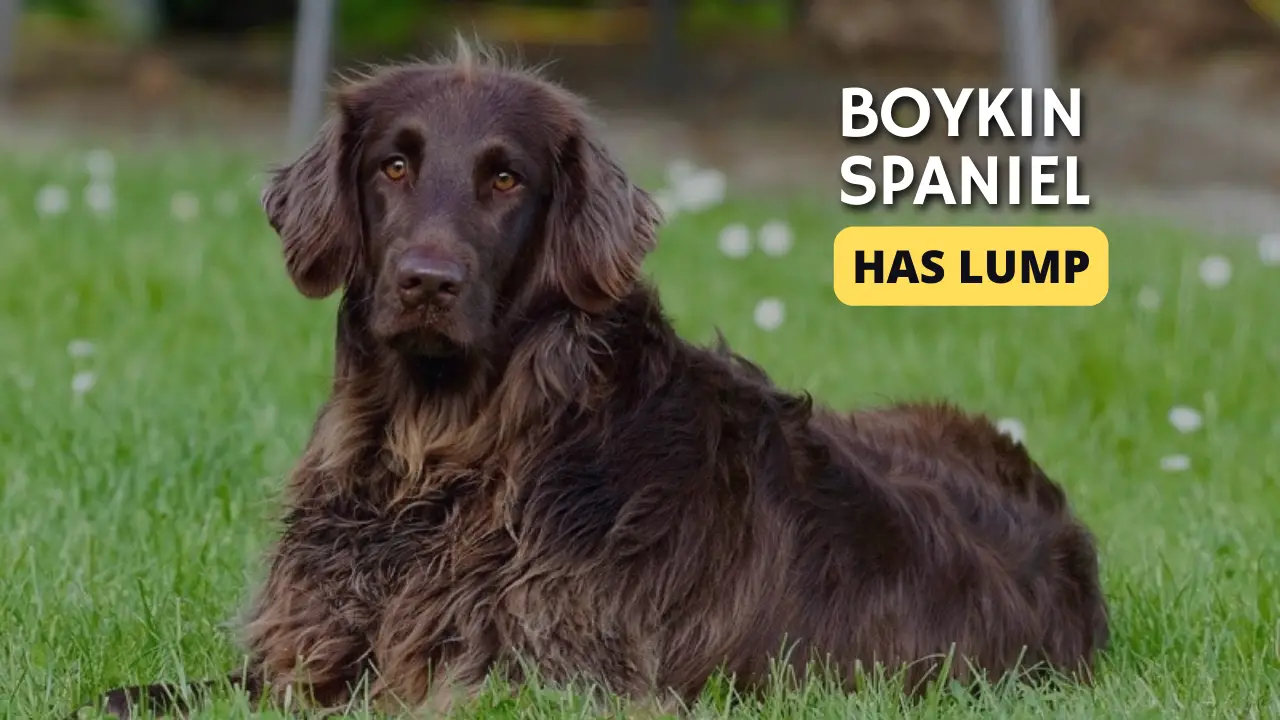Feeling a lump under your pet’s skin can be quite a worrisome experience for pet parents. You shouldn’t panic. Not every bump on the dog means cancer.
Yes, it’s crucial to take bumps and lumps seriously, but note that some lumps are more common than you think. In times like these, you need to be calm and find out what type of lump it is and how to cure it.
In this article, we will take a detailed look at the different types of lumps in a Boykin spaniel. Read on to learn more.

What Causes These Lumps and Bumps?
There are numerous reasons why your Boykin Spaniel can have lumps and bumps. Fat, benign, and malignant tumors, cysts, infections (abscesses), allergic reactions, and swelling brought on by an injury or hernia are a few common reasons.
When an organ or tissue pushes through another or into an unnatural location on the body, it is called a hernia. This condition frequently results in a lump or bump.
It’s critical to understand that, aside from allergic responses and abscesses, your veterinarian cannot determine the type of lump that is developing simply by feeling it. Numerous lumps—both dangerous and less severe ones—can have the same sensation and appearance.
An internal condition, such as tumors, swollen lymph nodes, or thyroid cancer, may be present in your dog if other symptoms of ill health accompany the lump. Internal disease symptoms could include:
- Constipation
- Retching
- Poor appetite
- Chronic thirst
- Frequent use of the bathroom
Types of Lumps
Below are the different types of lumps a Boykin Spaniel might have:
Lipomas
Fortunately, you don’t need to panic about these bumps. These are among the most prevalent in overweight dogs.
These lumps are benign fat cells that can develop anywhere on a dog’s body as they age and can vary in size.
However, there is no health issue or cause to remove the skin lump unless it hurts the dog’s movement or quality of life. Although they are often soft and flexible, it is best to avoid treating them at home because they may resemble more severe cancers.
Sebaceous Cysts
Sebum, present in the sebaceous gland, lubricates the skin, hair shaft, and hair follicles. When cysts become affected or develop a sac-like development under the skin, inflammation may develop.
The simplest way to describe it is that it resembles a dog pimple. A clogged oil gland on your dog is known as a sebaceous cyst. They may start off little and develop into something you wouldn’t expect from a pimple.
Don’t try to pop the cyst yourself. A sebaceous cyst will typically disappear on its own, either by decreasing or popping at its own pace and discharging a pasty-white fluid. It’s more likely to hurt or become infected if you try to remove a cyst yourself, which could pose a serious risk to your dog’s health over the long term.
You should keep an eye on a sebaceous cyst, and if it continues to expand rapidly without popping, consult your veterinarian. But avoid attempting to pop it by yourself.
Hematomas
These happen after trauma when blood gathers under the skin. Your dog may also experience pain from these.
Mast Cell Tumor
Mast cell tumors, which are lumps that enlarge and then shrink again, are composed of histamine granules. The tumor will expand as histamine is released, and once the flow has subsided, it’ll contract.
These lumps may itch. Avoid poking, scratching, or squeezing these pimples because doing so may increase histamine release and, while rare, result in a serious allergic reaction. Surgery should be used to remove these, ideally while they are still small.
Abscesses
An abscess is a result of an infection and should be treated as soon as possible by a veterinarian. These are lumps caused by an infection brought on by a bite, wound, or foreign object. They can rupture, are frequently uncomfortable, and can also contain a lot of blood and pus.
These infections will make your dog’s skin hot to the touch and hurt, but as long as they are cured before the illness spreads to other areas of your dog’s body, they don’t pose a serious health danger.
To begin therapy as soon as possible, go to a veterinarian or veterinary hospital right away!
Warts
A virus can create warts, which can appear around a puppy’s lips, and they’ll leave on their own. Surgical removal may be required for older canines.
Papillomas
Papillomas are infectious lumps on dogs’ skin and around their lips. They look like warts.
Cancerous Tumors
Dogs can develop cancerous growths that are either malignant or benign or even a combination.
The body can become infected with metastases from malignant tumors, which tend to spread quickly. Benign tumors can become extremely large but often do not metastasize and remain in one area.
Unlike a lipoma, a cancerous tumor won’t typically feel hot to the touch or harder than a lipoma. Your dog’s health won’t be in danger if the tumor is benign, in which case, a biopsy must be performed to assess the tumor and decide whether therapy is required.
Identifying the Lump
You should first find the lump. The second is not to get alarmed; not all lumps on a dog indicate cancer.
Next, you should make an appointment with your veterinarian to have it examined and determine whether it warrants concern.
It’s also frequently advised that you measure it because doing so makes it simpler to monitor its development because you can pinpoint its beginning with a precise figure.
Having a measurement will make it simpler to understand what changes have—or have not been happening—because sometimes our memories and sight can trick us into believing that the lump is getting bigger or smaller.

Flickr Image by Rich Renomeron
Diagnosis and Treatment
To ensure that no lumps on your puppy are spreading, restricting movement, or about to pop, you should always have them tested. Your veterinarian will know the ideal procedure.
They might suggest a fine needle aspirate and cytology, one of the least intrusive methods for evaluating a lump, in which a veterinarian collects cells using a tiny needle. For microscopic examination, the cells are mounted on glass slides and stained.
The vet might be able to make an accurate diagnosis right away depending on the mass’s kind.
Some other processes to treat the lump include:
Biopsy
A piece of the lump, or the entire thing, will be taken out and examined in a lab.
Cytology
This one can be carried out repeatedly and typically doesn’t call for anesthesia. Your veterinarian will do this test by repeatedly aspirating (poking) the lump with a tiny needle and examining it under a microscope.
Veterinary pathologists in the lab can review the slide if another medical opinion is required.
Surgery
Your pet will be sedated by your veterinarian, who will remove the entire tumor. To determine the type of growth and if it was entirely removed, sending the whole lump to a pathologist is ideal. The vet may recommend chemotherapy or radiation treatment if surgical removal is not an option.
Cryotherapy
Rapid tissue freezing is used in noninvasive cryotherapy, also called cryosurgery, to remove unwanted skin growths. This is a fantastic alternative for warts and other superficial lumps and lesions.
Regular Check-Up
You can keep track of any changes in your Boykin Spaniel’s current lumps and bumps—and promptly spot any new ones—by having regular annual or semiannual checks with your veterinarian and periodic examinations at home.
Conclusion
It can be challenging to identify a lump, as you might be confused if it’s just an infection or a skin tumor. This is why we advise taking your pet to a vet and getting a check-up done.


